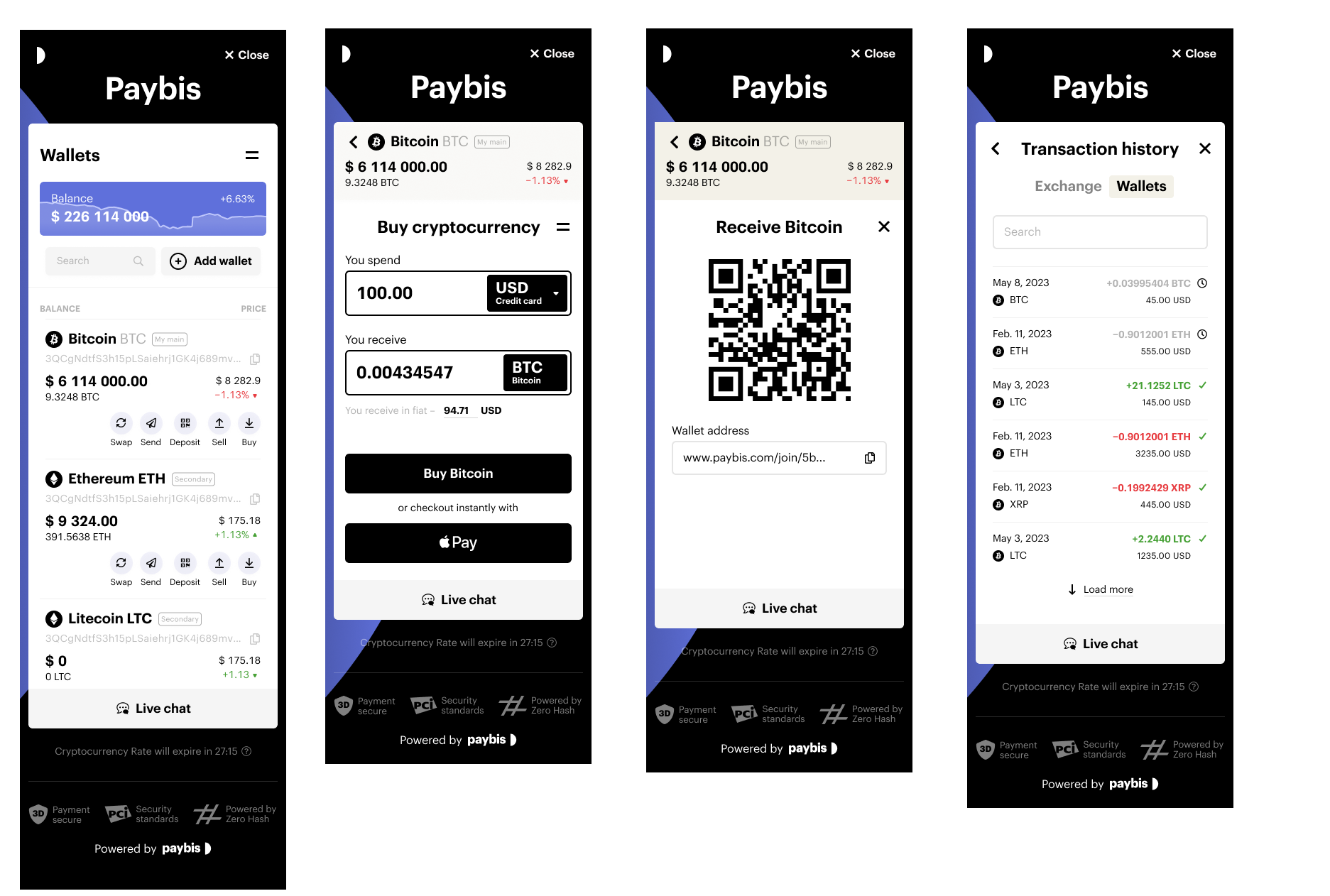Integrating crypto wallets as a service
Introduction
Paybis Plug&Play wallets solution enables you to provide a secure crypto custodial service to your customers through a straightforward integration. Integrated seamlessly into your application as an iframe full-screen overlay widget, Paybis Plug&Play wallets create the illusion that the entire process occurs on the partner's domain. Within the widget, customers can effortlessly create wallets, buy and store up to 80 of the most popular cryptocurrencies, withdraw crypto to a fiat account (credit card or bank account), swap crypto, and perform on-chain transactions (send and receive crypto).
As wallets incorporate embedded On/Off ramping capabilities, you can maximize your revenue by charging fees for each crypto-to-fiat and fiat-to-crypto transaction.

How to integrate Plug&Play wallets as a service
To build the Plug&Play wallets as a service integration, follow these steps:
1. Install the Plug&Play Wallets JavaScript SDK
Follow these instructions to install the the JavaScript SDK.
2. Get sessionId
Call the POST Initiate PnP Wallets session API to get the sessionId required to initialize Plug&Play Wallets SDK.
- To make this API request, it's only required to generate a unique customer ID per each user in your system and set it in the
partnerUserIdfield and to provide userlocalebased on their preferences in your app. - Optionally, you can pass additional customer data to the wallets to minimize friction iin the user journey:
- Set the customer's
emailto skip manual email address entry during registration. - Set the
applicantSumsubTokenif the user is verified on your end with Sumsub to avoid repeated KYC on Paybis. With valid shared token, Paybis can import all necessary applicant data directly from Sumsub. - Set the
passwordlessflag totrue, to skip the email entry and verification completely for the customers that have verified their emails on your end.
- Paybis generates and returns the unique
sessionId.
3. Initialize Plug&Play wallets SDK
Initialize Plug&Play wallets SDK with the retrieved sessionId. The Wallets UI can be opened in an iframe as a full-screen overlay (recommended), in a new browser tab, or by redirecting the user to the wallets app in the same tab.
4. End user journey
Within the session, user has the following actions available in the Plug&Play wallets app:
- Registration or Authentication:
- New users are required to enter and verify their email address and phone number by providing the OTP sent by Paybis.
- Existing users without an active session can log in by verifying their email through OTP. This step can be entirely skipped if the Passwordless (single sign-on) feature is enabled.
- KYC verification: user must complete identity verification before gaining access to core crypto wallet functionality. Note that you can use the reliance KYC to avoid repeated KYC for your verified customers.
- Create Wallet : generate a wallet address for each supported asset.
- Buy Crypto: top up their wallets from fiat account (credit card, Apple Pay, Google Pay) using the embedded onramping functionality.
- Sell Crypto: withdraw crypto and receive a fiat payout to credit or debit card.
- Deposit Crypto: receive crypto from any external wallet.
- Send Crypto: send crypto to any recipient.
- Track transaction history: monitor and track exchange and crypto transaction details and statuses.
Updated 7 months ago